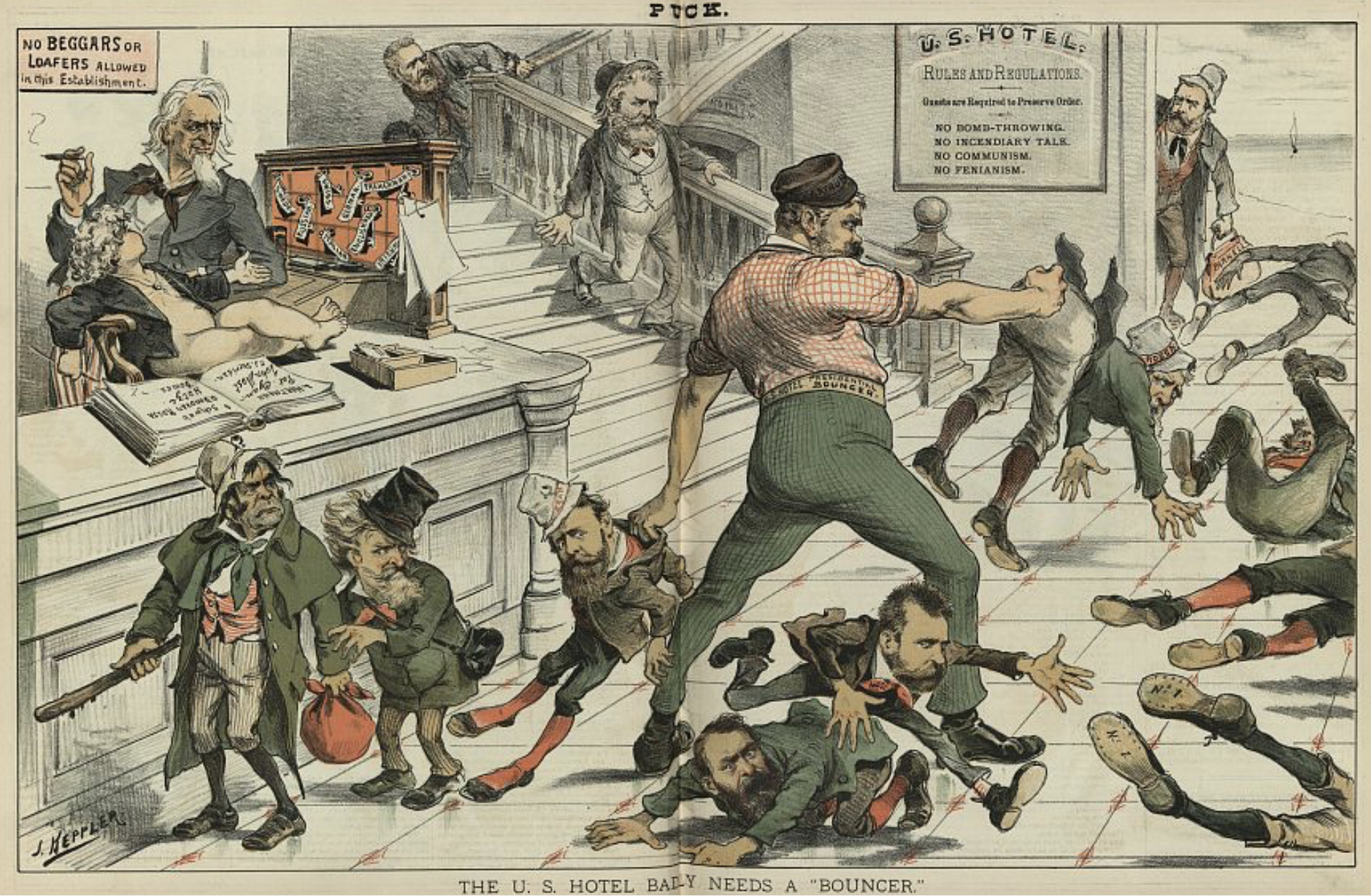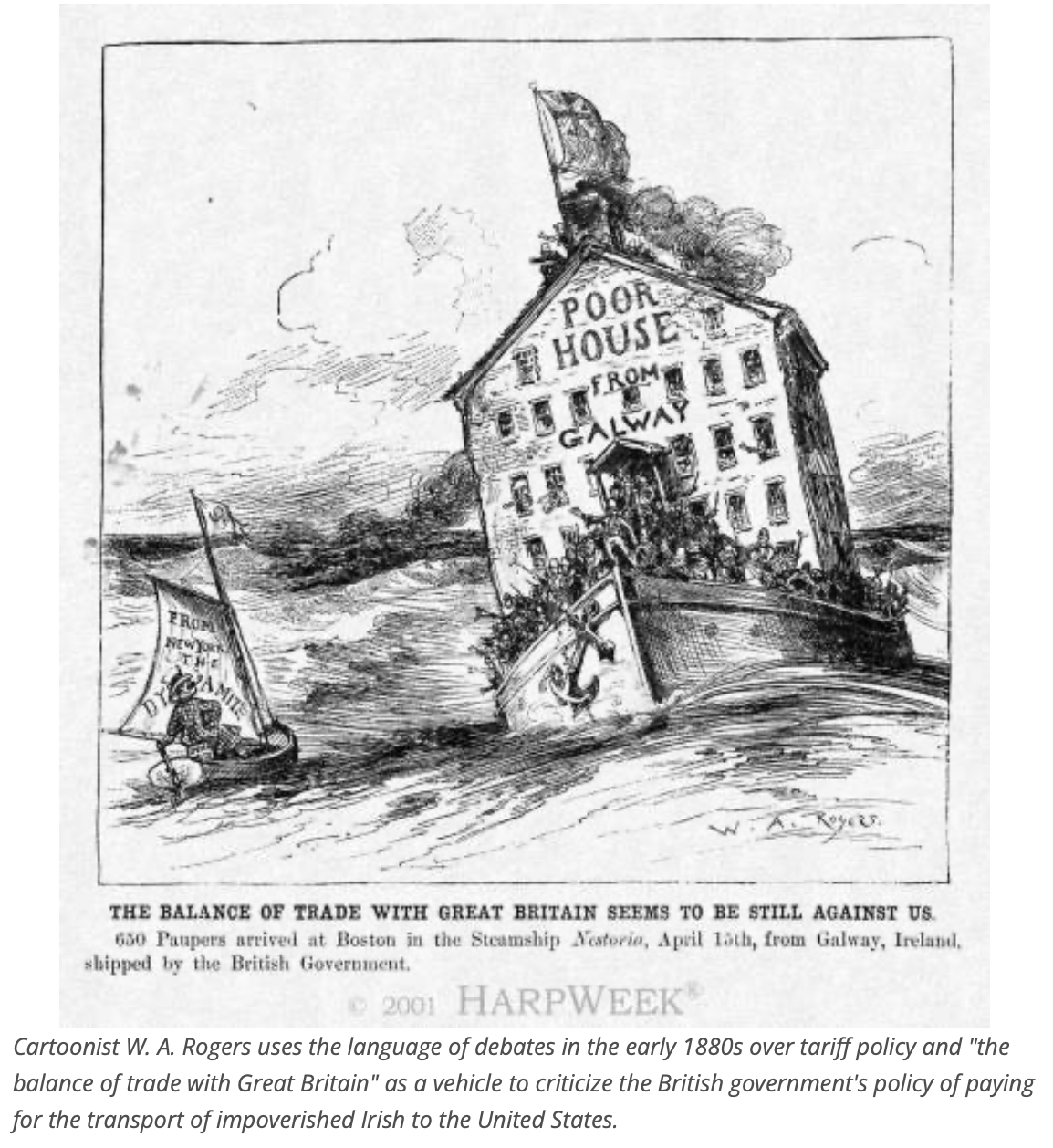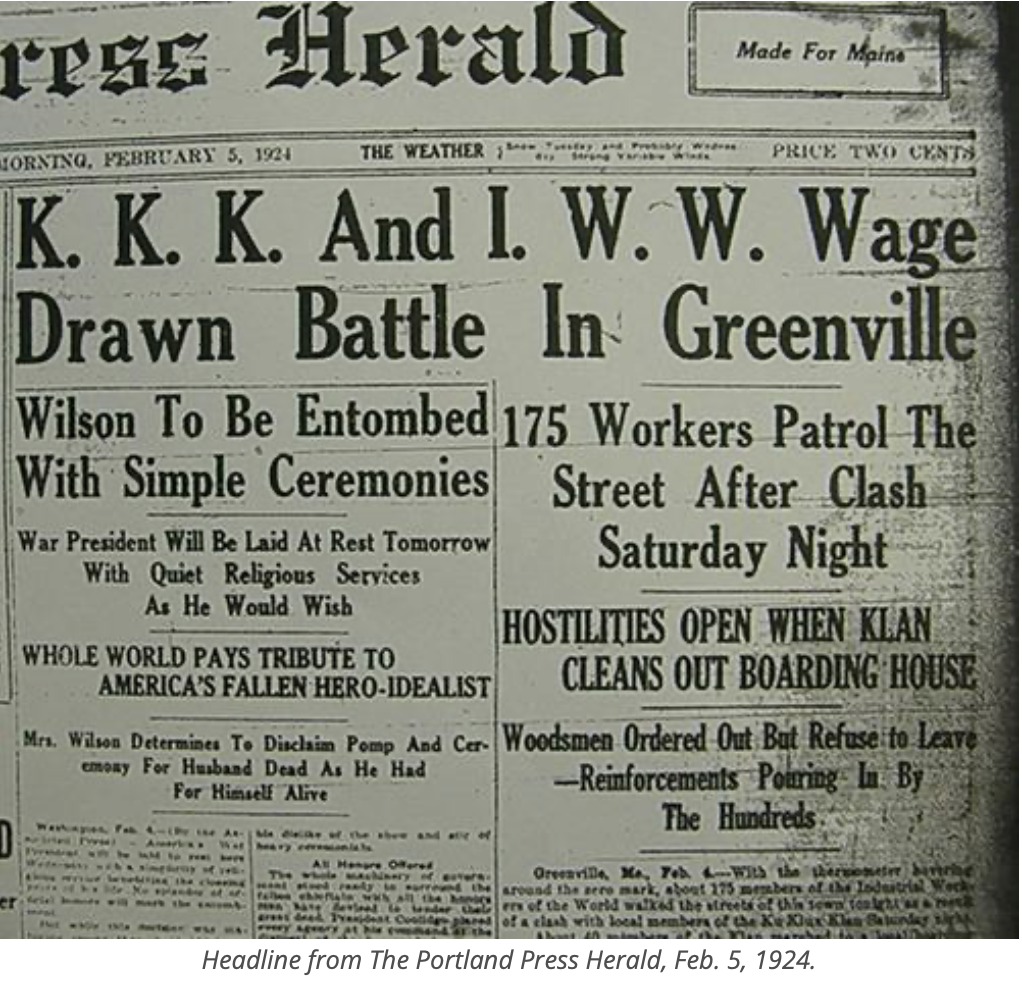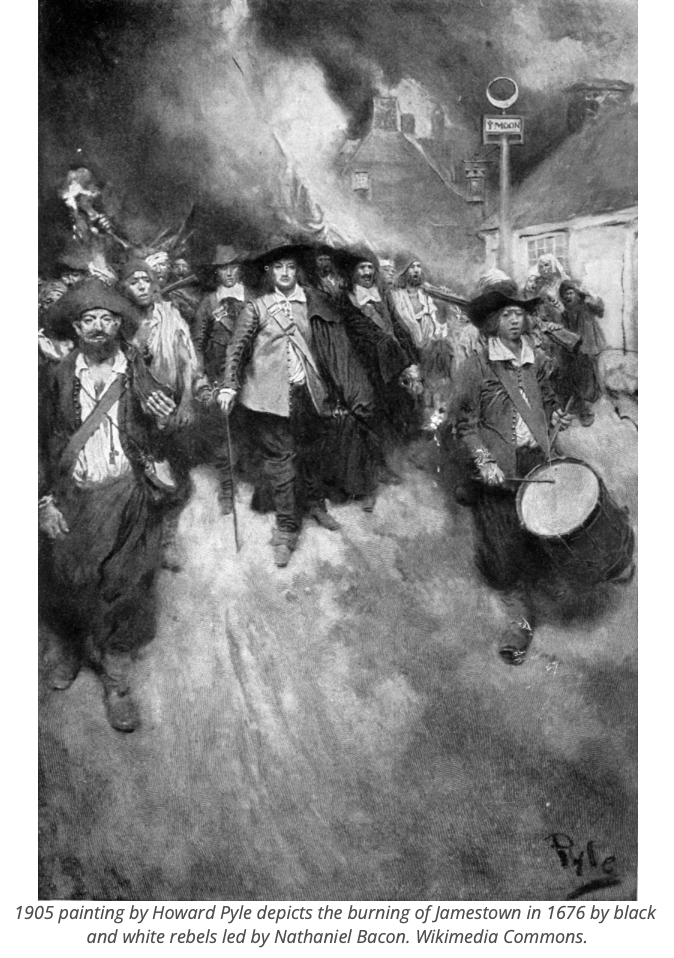How Corporations Use Anti-Immigrant Politics to Divide the Working Class

With the election season in full swing, you’re probably seeing a lot of negative political ads and social media posts about immigration. These narratives typically characterize immigrant workers as violent drug dealers who illegally cross the border to take advantage of our social safety net. Politicians have described people seeking asylum in America for safety and a better life as “animals,” “invaders” and “rapists” who want to harm our communities. These narratives are deeply misleading and numerous studies debunk these claims.
Anti-immigrant rhetoric is meant to stoke anger, fear and resentment. But there is nothing new about this divisive tactic. The wealthy, corporations and their handpicked politicians have used racism and xenophobia to divide the working class for hundreds of years because they know if we’re fighting amongst ourselves we fail to see our common interests as working people. Here in Maine, this tactic has been repeatedly used over the centuries and it’s critical that we educate our friends, family and coworkers about how it harms all working class people.
A History of Anti-Catholicism & Xenophobia in Maine

When increasing numbers of Irish refugees came to Maine to escape the Great Famine in Ireland in the mid-19th century, many Anglo Protestant Mainers responded with anti-Catholic hysteria. In the 1850s, Know Nothing mobs attacked a Catholic neighborhood in Bangor, burned a Catholic church in Bath and tarred and feathered Jesuit Priest John Baptist in Ellsworth. Anti-Catholic Maine legislators also worked to pass several anti-immigrant bills in those years targeted at French Canadian and Irish immigrants.
Elite newspapers like The New York Times spread conspiracies that the Catholic Church had sent French Canadian immigrants to take over New England so that Quebec could annex the region to form a new nation-state called “New France,” which would supposedly be run as a Catholic theocracy. One 1881 NY Times article described French-Canadian immigrants as “ignorant and unenterprising, subservient to the most bigoted class of Catholic priests in the world. … They care nothing for our free institutions, have no desire for civil or religious liberty or the benefits of education.”
Academics promoted since-discredited eugenics theories that French-Canadians and Irish people were biologically inferior to the dominant Anglo-Saxon Protestant race. Newspapers constantly ran articles focusing on Irish crime and characterized Irishmen as drunks and bootleggers, the 19th century equivalent of drug dealers. Irish were also broadly condemned as dangerous radicals after a small group of Irish Nationalists known as the Fenians attacked Canada, including Campobello Island off Maine, to demand the British withdraw from Ireland.

1883 anti-Irish cartoon of President Chester A. Arthur as the "U.S. Hotel Presidential Bouncer" who is clearing the lobby of Irish radicals. (J. Keppler, Puck Magazine. Library of Congress).
The Irish were often depicted in editorial cartoons as almost ape-like in appearance and were also fighting and drinking. In 1852, Portland's mayor complained that Irish people made up half of the occupants of the city's alms house, an early city homeless shelter. Not wanting to pay to house the impoverished Irish, the city decided to started declaring that many of the Irish residents were "insane" so they could get them committed to the Augusta Insane Asylum at the expense of the state.

In his book A Distinct Alien Race: The Untold Story of Franco-Americans, David Vermette describes how 19th century New England textile barons developed the modern corporation and built their fortunes on the backs of a French-Canadian working class. Mill owners found that a poverty-stricken immigrant workforce was much easier to control than native born workers who were prone to striking.
Companies began warehousing the new workers in cramped rooms in shoddily built tenements. Plagues of dysentery and typhoid from water contaminated with sewage and toxic chemicals claimed the lives of numerous young French children—their graves still dot the cemeteries in mill towns across Maine. Managers cared little about workplace safety and countless limbs were lost in accidents due to their neglect.
The public would consider these conditions to be unacceptable for the good Anglo Protestant Yankee women who previously worked in these mills. But since it was only French Canadian peasants, the mill owners no longer needed to recognize the humanity of their workers. As one manager said, “I regard my work people just as I regard my machinery. So long as they can do my work for what I choose to pay them, I keep them, getting out of them all I can.”
In the 1880s, Maine Congressman Thompson Murch, a Vinalhaven stonecutter (and perhaps the first union leader elected to Congress), was a leading a proponent of the Chinese Exclusion Act, which banned Chinese immigrants from coming the United States. One Massachusetts labor official described French Canadian workers as “the Chinese of the eastern states” because it was believed they undermined wages and took jobs from native-born workers.
This fierce xenophobia continued into the 1920s, when the Maine Ku Klux Klan attracted tens of thousands of bigoted followers. Throughout Maine, the Klan held parades and burned crosses to intimidate Catholic Mainers. In February, 1924, Klansmen attacked French Canadian union members to drive them out of Greenville on the behalf of the large timber companies.

Targeting Southern Europeans
By that time, Southern Europeans were the main target of the media, xenophobic politicians and labor unions. As we wrote previously, the Maine State Federation of Labor (AFL) Convention passed a resolution in 1923 opposing the "hordes of uneducated and unskilled laborers" from Southern Europe like Italy and Greece," but welcoming the "stalwart and intelligent immigrants from the north of Europe because of their easy assimilation of American ideals and their staunch support of the principles of our government.”

In 1905, the Bangor Daily News ran a story under the offensive headline “Stranded Dagos Look for Help,” about a group of Italian workers who showed up at Bangor City Hall asking for train fare home after being tricked by a recruiter into taking a job digging ditches in waist-deep water. The reporter mocked their accents and claimed they smelled of strong odors. The same year, the paper ran another story under the headline “Dago Invasion” about 175 Italian laborers who were brought to the city to build the new railroad. Employers didn’t hesitate to use ethnic prejudices to their advantage, such as when Rockland businessmen brought in Italian workers to break a strike of quarry workers in the early 1900s.
 1
1
1886 leaflet opposing workers who were brought by a company to provide cheap labor for the town waterworks in Norway, ME.
Racist Pseudoscience Used to Justify Oppression
The Bangor Daily News did acknowledge in a 1903 editorial that the “cheap Irish” who worked “cheaper than the Yankees thought was right” had by that time become largely “assimilated.”
“Today the sons of those old Irishmen and Yankees are making bitter complaint concerning the ‘dirty Dagoes,’ indicating that the older arrivals look with scorn upon their new rivals,” the newspaper wrote. “But the ‘Dagoes’ are going to win a place for themselves, even as the Irish did. It may take them longer, but their time is coming, and the combined powers of the Yankees and Irish cannot put it off for long.”
However, the editorial went on to say that African Americans and Native Americans would never assimilate or become productive members of white society.
“Neither the petting of philanthropists nor the efforts of teachers can overcome their inherent laziness and lack of foresight,” the paper wrote. "The end of the Indian is in sight. Indications are that the negro is going in the same direction.”
This, of course, was utter nonsense. Left unsaid, was that the second and third generation Irish and Italian-Americans could pass as “white” due to the color of their skin, but African Americans and Native Americans could not. Back then, elite institutions used racist pseudoscience to claim non-white people were culturally and intellectually inferior - theories that have been used throughout history to justify oppression and even genocide. As labor history teaches us, racism itself developed as a legal system in America to justify the enslavement of African Americans after black and white workers rose up together in Bacon's Rebellion to overthrow the ruling planter elite of Virginia in 1676.

In order to prevent similar revolts, the colonial ruling class enacted a series of laws granting legal privileges to the Christian European servants — including the right to own property, own guns, participate in juries, and serve on militias — to buy their allegiance. With these policies, the planter elite created a racial caste system where Africans were enslaved from birth if their mother was enslaved and deprived of the same rights as the European workers. Skin color gradually became the method to divide working people and its effects linger with us to this day.
Uniting in the Spirit of Worker Solidarity
As the Maine AFL-CIO states in our 2020 resolution, the enemies of the labor movement have long recognized that unions have the potential to promote racial equality by building solidarity along class lines , which poses a threat to corporate profits. That’s why they have sought to destroy unions by fighting vigorously for the passage of anti-union laws like so called “right-to-work” legislation, which was originally pushed by white supremacist organizations in the South to prevent white and black workers, immigrants and native-born people, from banding together in unions. In order to win decent wages, fair working conditions, housing, retirement security, health care and education, it’s critically important that the labor movement must mobilize to defeat racism and xenophobia because it destroys solidarity.
Recent arrivals from Africa, Latin America and Asia are just the latest targets in this centuries-long effort to pit working people against each other. But like the Irish, French and Italian immigrants before them, they too are rebuilding lives, raising families and thriving in Maine. Many New Mainers have also graduated from our Union Construction Academy and have found jobs in various trades. They are our union brothers and sisters and they make our movement stronger. Let’s not lose sight of that as we enter another bitter election.
